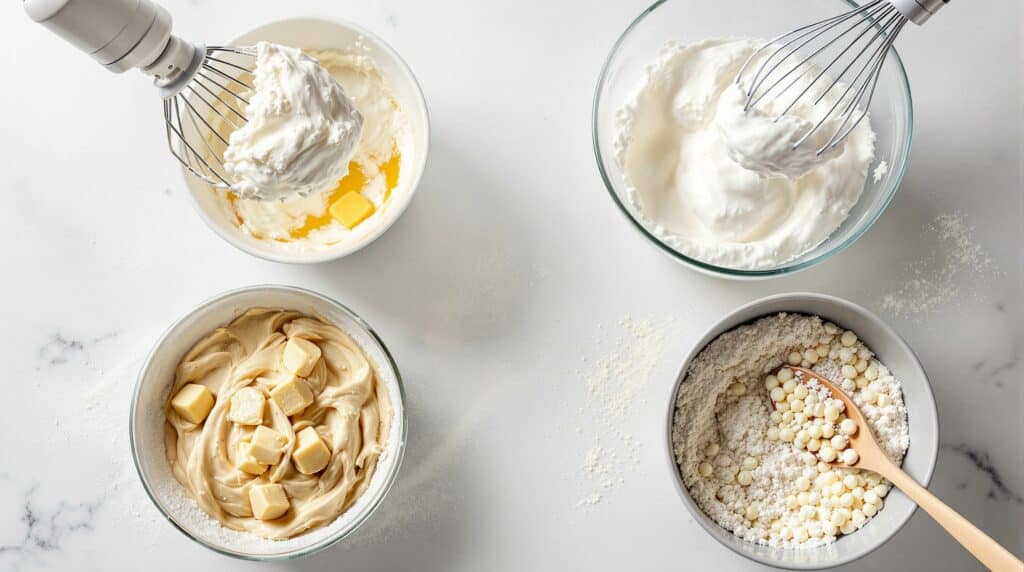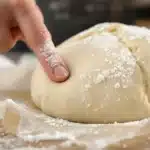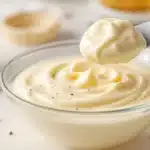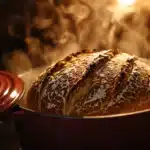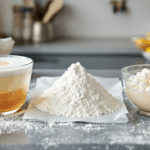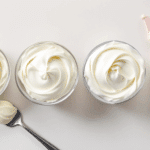As you delve deeper into baking recipes, you’ll notice they use very specific action words to describe how ingredients should be combined: “cream the butter and sugar,” “fold in the egg whites,” “beat until pale and fluffy,” “whisk the dry ingredients,” “cut in the butter.” To a beginner, these might seem like stylistic choices or simply different ways of saying “mix everything together.” But seasoned bakers know these terms are precise instructions, each describing a distinct technique with a specific purpose that fundamentally impacts the final product’s texture and structure.
Treating all mixing the same – perhaps just stirring everything vigorously in a bowl – is a common pitfall that leads to disappointing results: tough muffins instead of tender ones, flat cakes instead of airy ones, dense cookies instead of light ones. The how of mixing is often just as critical as the what (the ingredients themselves). This guide will demystify the common mixing methods used in baking, explaining the purpose behind each technique – whether it’s incorporating air, developing gluten, minimizing gluten, or distributing fat – and revealing why following these instructions carefully is key to achieving baking success.
Beyond Just Combining: Why Mixing Method Matters
Mixing in baking rarely aims only to homogenize ingredients. Different techniques are employed to achieve specific structural and textural goals:
- Incorporating Air: Some methods are designed to trap air bubbles within the batter or dough. This trapped air acts as a mechanical leavener, expanding when heated to create lightness and volume. Examples include the creaming method and whipping egg whites or cream.
- Developing Gluten: As we saw with kneading, some mixing (specifically prolonged, vigorous manipulation of wheat flour doughs) is intended to develop the gluten network, creating the strong, elastic structure needed for chewy breads.
- Minimizing Gluten Development: For tender baked goods like muffins, cakes, scones, and pie crusts, the goal is often the opposite: combine ingredients quickly and gently to limit gluten formation. Overmixing these items leads to toughness.
- Distributing Fat: The way fat is incorporated dramatically affects texture. Cutting cold fat into flour creates pockets that produce steam for flaky layers (pie crusts, biscuits). Creaming softened fat with sugar coats flour particles and incorporates air for tenderness and lift (cakes, cookies). Melting fat creates density and chewiness.
- Emulsifying Ingredients: Certain techniques, like whisking, help create stable emulsions, blending ingredients (like oil and acid, or egg yolks and liquids) that wouldn’t normally mix smoothly.
The mixing method prescribed in a recipe is chosen specifically to achieve one or more of these goals, directly influencing whether the final product is light, airy, chewy, dense, tender, flaky, or crumbly. Ignoring the specified technique means gambling with the outcome.
The Baker’s Motion: Key Mixing Techniques Defined
Let’s break down the most common mixing methods, understanding their actions, purposes, and typical applications.
Beating / Creaming
This involves vigorously agitating ingredients, often using an electric mixer (stand or hand) but achievable with dedicated effort by hand using a wooden spoon or sturdy whisk.
- Action: Rapid, continuous agitation that forces ingredients together, often incorporating air.
- Purpose (Creaming Fat & Sugar): This is a cornerstone technique for many cakes and cookies. Beating softened (room temperature) fat, typically butter, with crystalline sugar (granulated or brown) achieves several things simultaneously:
- Aeration: The sharp edges of the sugar crystals cut through the softened fat, creating thousands of microscopic air cells. This trapped air is a primary source of leavening, making the final product lighter.
- Dissolving Sugar: Helps dissolve the sugar partially into the fat phase.
- Even Fat Distribution: Ensures the fat is evenly dispersed for consistent texture and tenderness.
- Visual Cue: The mixture visibly lightens in color and increases in volume, becoming “light and fluffy.”
- Purpose (Beating Eggs / Eggs & Sugar): Beating whole eggs, yolks, or whites, often with sugar, incorporates significant air, creating a foam. This is essential for the structure and lightness of sponge cakes, chiffon cakes, and meringues. The beating denatures egg proteins slightly, allowing them to trap air bubbles. Sugar helps stabilize these foams.
- When Used: Classic butter cakes, pound cakes, many types of cookies (chocolate chip, sugar cookies), some frostings. Also used for making egg foams for sponge cakes or meringues.
- Tips: For creaming, ensure your butter is properly softened (pliable but still cool, not melted or greasy). Scrape down the bowl periodically to ensure even mixing. Beat for the time specified or until the visual cues (light, fluffy, increased volume) are met. When adding flour to creamed mixtures for cakes, mix only until just combined to avoid toughening the cake by overdeveloping gluten.
Whisking
This technique utilizes a wire whisk (balloon, French, or flat) to blend ingredients quickly while often incorporating air.
- Action: Rapidly moving the whisk through ingredients in a circular, back-and-forth, or lifting motion. The wires cut through the mixture, breaking up clumps and trapping air.
- Purpose:
- Aeration: Its primary use in many cases. Whisking egg whites or heavy cream incorporates substantial air, creating stable foams (meringues) or voluminous toppings (whipped cream).
- Combining Dry Ingredients: Effectively blends and aerates dry ingredients like flour, leaveners, salt, and spices, serving as a quick alternative to sifting for even distribution.
- Emulsifying: Helps create stable suspensions of liquids that don’t normally mix easily, like oil and vinegar in vinaigrettes, or incorporating melted butter or oil into batters.
- Smoothing Lumps: Breaks down lumps in sauces, custards, or thin batters, ensuring a smooth consistency.
- When Used: Making meringues (whisking egg whites and sugar), whipped cream, combining dry ingredients before adding liquids, smoothing custards and sauces (like pastry cream or béchamel), making thin batters like crêpes or popovers, creating emulsions.
- Tips: For maximum volume when whipping egg whites or cream, use a large, clean, grease-free bowl and whisk. Start slowly when combining dry ingredients to avoid dust clouds, then whisk more thoroughly. For emulsions, sometimes slow addition of one ingredient while whisking continuously is required.
Folding
This is a very gentle mixing technique designed to combine ingredients of different densities, particularly light, airy mixtures into heavier ones, without losing the air incorporated earlier.
- Action: Uses a large, flexible rubber spatula or sometimes a large balloon whisk. Involves a specific motion:
- Cut vertically down through the center of the mixture with the edge of the spatula.
- Sweep the spatula across the bottom of the bowl towards you.
- Lift the heavier mixture from the bottom up and gently fold it over the lighter mixture on top.
- Rotate the bowl a quarter turn (90 degrees).
- Repeat this cut-sweep-lift-fold-rotate sequence.
- Purpose: To incorporate ingredients (e.g., whipped egg whites, whipped cream, flour mixtures, chocolate chips, berries) into a batter or foam while minimizing deflation and minimizing gluten development. The goal is to combine just enough without knocking out the precious air needed for lightness.
- When Used: Absolutely essential for incorporating whipped egg whites into delicate cake batters like Genoise, Chiffon, or Angel Food Cake. Folding flour into egg foams. Incorporating whipped cream or egg whites into mousse bases or soufflés. Gently adding fragile ingredients like berries or chocolate chips into muffin or cake batters without breaking them or causing them all to sink.
- Tips: Be gentle but efficient. Work relatively quickly but without frantic movements. Scrape the bottom of the bowl thoroughly with each fold. Stop folding as soon as the ingredients are just combined. It’s often better to leave a few faint streaks of egg white or flour than to overmix and deflate the mixture entirely. Over-folding is the death of airy cakes!
Stirring / Combining
This is the most basic mixing method, typically done with a wooden spoon or spatula.
- Action: Moving the utensil through the ingredients in a circular motion to simply blend them together. The intensity can vary but is generally less vigorous than beating.
- Purpose: To combine ingredients until just homogenous, often with the specific goal of minimal mixing and minimal gluten development.
- When Used: The “Muffin Method” (combining all dry ingredients in one bowl, all wet ingredients in another, then adding wet to dry and stirring until just moistened). Also used for quick breads, some scones, simple sauces, or bringing dough ingredients together just before kneading begins.
- Tips: For tender muffins, pancakes, waffles, and quick breads, this method is key, and the instruction is almost always to mix only until the dry ingredients are moistened. A lumpy batter is perfectly fine and actually desirable – it signifies that you haven’t overmixed and developed excessive gluten, which would make the final product tough and create tunnels.
Cutting In / Rubbing In
These related techniques are used to incorporate solid, cold fat (butter, shortening, lard) into dry ingredients (primarily flour).
- Action:
- Cutting In: Using a pastry blender (a tool with parallel rigid wires or blades), two knives used in a crisscross motion, or even the pulse function of a food processor. The goal is to break the cold fat into small pieces while simultaneously coating those pieces with flour.
- Rubbing In: Using your fingertips (cool hands are best!) to literally rub the pieces of cold fat into the flour, flattening the fat and coating it until the mixture resembles coarse breadcrumbs or small peas, depending on the recipe’s requirement.
- Purpose: To distribute small pieces of cold fat throughout the flour mixture. The fat coats some of the flour, inhibiting gluten development (promoting tenderness). The remaining solid pieces of fat melt during baking, releasing steam and creating small pockets in the dough. This steam pushes apart layers of dough, resulting in the characteristic flakiness of pie crusts and biscuits, or the tender, crumbly texture of scones and shortcrust pastry.
- When Used: Essential for making flaky pie crusts, biscuits, scones, shortcrust pastry (for tarts and quiches), and crumble/streusel toppings.
- Tips: The absolute key is to keep the fat COLD throughout the process. If the fat melts, you lose the potential for flakiness. Work quickly. If using fingertips, try to use just your fingertips (which are cooler than your palms) and lift your hands frequently to keep things cool. Stop mixing as soon as the fat reaches the size specified in the recipe (e.g., “coarse meal,” “pea-sized”). Overmixing will create a dense, non-flaky result.
Choosing Your Tool: Hand vs. Machine
While traditional baking relied solely on hand power, modern kitchens often have electric helpers. Knowing when to use which tool is part of developing baking smarts:
- Hands / Manual Tools (Spoons, Spatulas, Whisks, Pastry Blenders): Offer the most control and allow you to feel the texture changes in ingredients. Essential for delicate operations like folding, gently stirring muffin batter, or achieving the right texture when cutting in fat. Highly recommended for beginners to build intuition.
- Electric Hand Mixer: Good for tasks requiring sustained beating or whisking where a stand mixer isn’t necessary or available, like beating eggs, whipping cream in smaller quantities, or creaming butter and sugar for smaller recipes. Easier to store than a stand mixer.
- Stand Mixer: A powerful tool that excels at tasks requiring prolonged, vigorous mixing.
- Paddle Attachment: Best for creaming butter and sugar, beating batters, making cookie dough.
- Whisk Attachment: Ideal for whipping large volumes of egg whites or cream quickly.
- Dough Hook: Used for kneading bread dough (as discussed previously).
- Caution: Stand mixers are powerful. It’s much easier to overmix batters or over-knead dough compared to doing it by hand. Pay close attention and stop frequently to check consistency.
Mixing Method Matters: Recipe Examples
Let’s tie these methods directly to the final product:
- Goal: Tender Muffins. Method: Muffin Method (gentle stirring of wet into dry). Why? Minimizes gluten development for tenderness. Lumps are good!
- Goal: Light & Airy Butter Cake. Method: Creaming butter and sugar, then gently mixing in other ingredients. Why? Incorporates air via fat for lift; careful mixing prevents toughness.
- Goal: Ethereal Chiffon Cake. Method: Whisking egg whites to stiff peaks, then gently Folding them into the yolk-based batter. Why? Maximum air incorporation from whites, careful folding prevents deflation.
- Goal: Flaky Pie Crust. Method: Cutting In cold butter into flour until pea-sized pieces form, adding minimal ice water. Why? Cold fat pieces create steam pockets for flakiness; minimal water/mixing prevents gluten development (toughness).
- Goal: Chewy Artisan Bread. Method: Kneading (by hand or hook). Why? Develops a strong gluten network necessary to trap gas and provide structure and chew.
Conclusion: Mix with Purpose
The verbs used in baking recipes – beat, cream, whisk, fold, stir, cut in – are not mere suggestions; they are precise instructions critical to achieving the desired outcome. Each method manipulates ingredients in a specific way to control air incorporation, gluten development, and fat distribution, ultimately dictating the final texture and structure of your bake.
As an aspiring baker, pay close attention to these action words. Understand the purpose behind the specified technique. Why are you creaming instead of just stirring? Why fold gently instead of beating vigorously? Practice the different motions – feel how butter and sugar transform when creamed, learn the light touch required for folding, recognize the signs of properly cut-in fat.
Mastering these fundamental mixing methods moves you beyond simply following steps towards truly understanding the craft of baking. It gives you the control to consistently create baked goods with the exact texture you intend, whether it’s the airy crumb of a perfect cake, the satisfying chew of well-kneaded bread, or the delicate flake of a prize-winning pie crust. Mix wisely, mix with purpose, and watch your baking skills soar.

